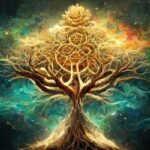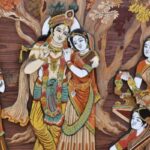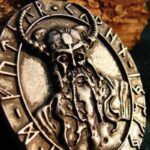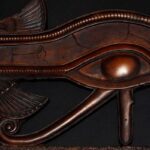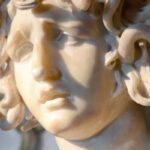We explain what mythology is and tell you everything about Greco-Roman, Norse, Egyptian, Aztec mythologies and many more.
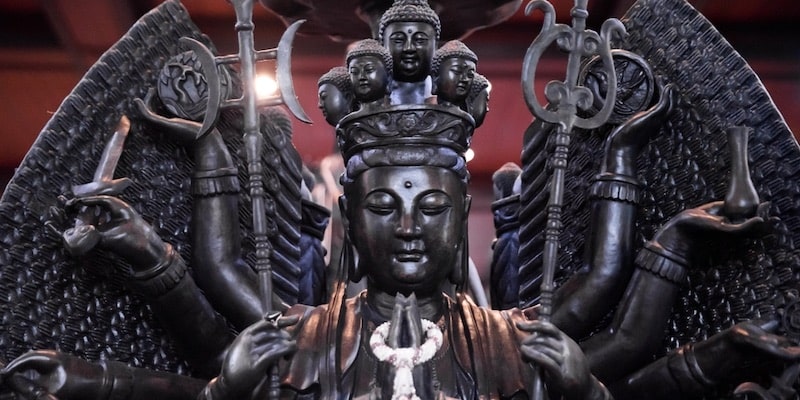
What is a mythology?
a mythology is an organized set of myths and mythical stories that constitute a particular worldview of a religion and culture That is, they reflect the way in which a society understands human existence, that of the world and the values by which to live.
Mythologies are composed of myths, which are sacred stories through which a culture gives meaning to existence. Through them an explanation (religious and fantastic) of natural and cultural phenomena is built of the world. For example, creation myths are very common, with which ancient cultures explained the origin of the universe and the human being.
Gods play a central role in mythologies, as creative, ordering and often destructive entities of what exists, and with which the human being is in continuous tension. The same goes for mythical heroes, semi-human figures (often descendants of gods) who perform great feats and represent the great values and flaws of humanity, according to the perspective of their culture.
The study of mythologies by anthropologists and other specialists allows us to identify common patterns and related archetypes in the different mythologies that exist, which belong to different and often distant peoples such as the Greek, the Mesoamerican, the Chinese and the Scandinavian.
See also: Worldview
Greek or Greco-Roman mythology
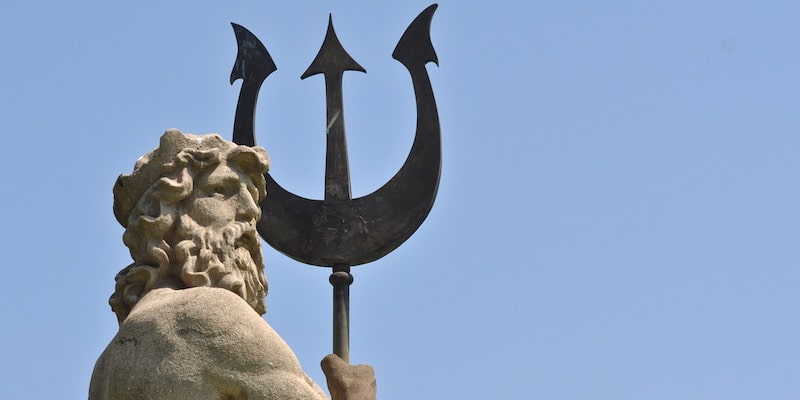
Greek mythology, born and developed in Mediterranean Antiquity, is probably one of the best known and most important in the world, given that The stories of Greek religion were inherited by the Roman conquerors and, through them, transmitted to the rest of the Western world. This is why we often talk about Greco-Latin or Greco-Roman mythology, since the ancient Romans adopted part of Greek mythology and fused it with their own beliefs and stories.
According to Greek mythology, the gods who ruled humanity belonged to the most recent and modern generation of gods (called Olympians since they lived on top of Mount Olympus), who defeated the ancient gods (the Titans) who fathered them and were later distributed the three kingdoms that make up the world:
- The earth, ruled by Zeus the father god and lord of lightning.
- The sea, ruled by Poseidon lord of tides and storms.
- Hades or underworld, ruled by Hades the lord of the deceased.
These gods engendered in humanity the demigods, heroes of divine ancestry such as Hercules, as well as nymphs, fauns and other mythical creatures, including famous monsters such as the hydra of Lemnos, the mermaids or the cancerbero.
Norse, Germanic or Scandinavian mythology
Norse mythology, that is, from the northern European region, It is the product of the northern Germanic peoples who inhabited the Scandinavian region north of the Ancient Roman Empire. Transmitted for centuries exclusively orally, is preserved thanks to the set of written stories (Eddas) from the medieval era written during or after the Christianization of these regions of Europe.
The world that the Norse religion imagined was structured in a set of parallel kingdoms in the center of which grew the immense world tree, the sacred tree Yggdrasil. These kingdoms contained different divinities and creatures, and existed in a concentric manner:
- Niflheim It was the kingdom of mists.
- Alfheim and svartálfaheim, the kingdoms of the light and dark elves respectively.
- Helheim, the kingdom of the deceased.
- Jötunheim, the kingdom of the giants.
- Muspelheim, the kingdom of fire and lava.
- Asgard, the celestial kingdom of the gods.
- Midgardthe kingdom of human beings, surrounded by the sea, in the center of the world.
The Nordic religion had its own pantheon of gods, divided into two sides: the aesir and asynjur (gods of war), and go (gods of fertility and abundance) who were in a millennia-old conflict that probably represented the tensions typical of the Scandinavian way of life. In fact, human beings, at the mercy of the gods, could ascend to the asgard to celebrate with the aesir only if they died in battle and their souls were saved by winged deities called Valkyries.
Egyptian mythology
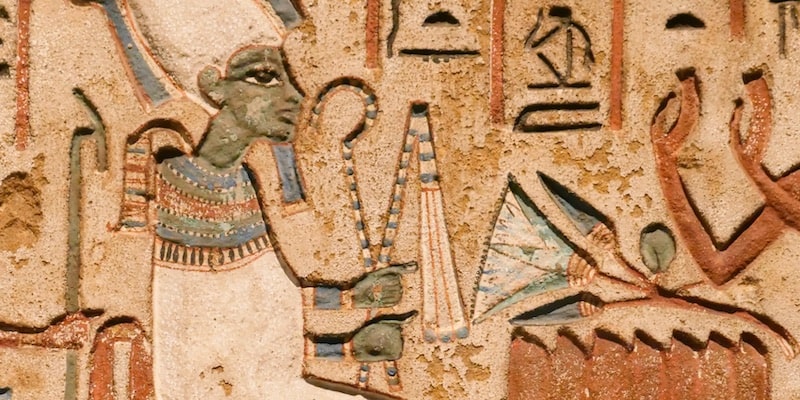
Egyptian mythology has to do with the religion of Ancient Egypt, from predynastic times to the Christianization of Egypt in the 6th century, when traditional Egyptian religion was banned by the Roman emperor Justinian I. The stories and imaginations that make up this mythology reflect the history of unification of the two regions of the Egyptian Empire (Upper and Lower Egypt) who had their own deities, many of which ended up merging over time.
The view of the world of Egyptian religion was strongly determined by the geographical panorama in which their civilization developed: a river (the Nile) that crossed fertile plains and was surrounded by the desert. Thus, for the Egyptians The world was made up of three regions:
- The sky (nun) home of the gods, all children of the celestial goddess Nut.
- The land (geb), abode of human beings.
- The afterlife (dumat) the kingdom of the dead, associated with the desert.
The Egyptian pantheon was particularly numerous and complex, and It had main gods associated with the Sun (Ra), balance (Maat) or humanity (Horus). The main story of Egyptian mythology centers on the death and resurrection of Osiris, the god King, who is murdered and dismembered by his jealous brother, Seth. Egyptian stories reveal a solar and agrarian religion, whose high priests were the pharaohs themselves, monarchs and representatives of the divine world on earth.
Aztec or Mexica mythology
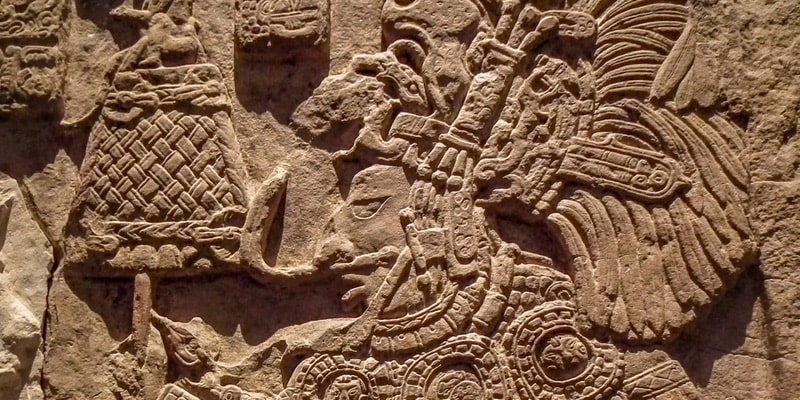
Aztec or Mexica mythology includes the Nahua stories and legends that make up the pre-Columbian cultural tradition of the Valley of Mexico. These traditions and stories have important meeting points with those of other Mesoamerican peoples, to the point of sharing gods (such as the feathered serpent, quetzalcoatl) with many of the peoples that the Aztec Empire subdued and assimilated.
Although the Aztec religion was pantheistic, it was dominated by the cult of the god of the Sun and war: Huitzilopochtli. This god played a leading role in the story of cosmic creation and the founding of Mexico-Tenochtitlán, the Aztec capital, and was the one to whom the Aztecs sacrificed captured warriors every 52 years, as they believed that otherwise the sun would leave to appear on the horizon.
On the other hand, according to Mexica mythological stories, The world was the fifth and most recent of those that had existed, after the previous four were devastated by the gods. Each of these previous worlds was associated with a fundamental element: earth, water, air and fire, and each one was destroyed by a respective “sun”, that is, a specific god: Tezcatlipoca (the first sun), Quetzalcóatl (the second), Tláloc (the third), Chalchiuhtlicue (the fourth) and the fifth sun, Tonatiuh, was responsible for the creation of humanity.
Other mythologies
There are many very different mythological traditions, each one coming from a specific culture. Some examples of them are:
- Mesopotamian mythology typical of the three great Mesopotamian civilizations that developed in Antiquity between the Tigris and Euphrates rivers: the Sumerians, the Assyrians and the Babylonians.
- Persian mythology typical of the ancient inhabitants of the Iranian plateau, in Central Asia, whose fundamental religion was Zoroastrianism.
- Celtic mythology typical of the European peoples of the Iron Age, such as the Gauls and the Celtiberians, who lived in Western Europe outside the Roman Empire.
- Selknam mythology typical of the South American natives of Tierra del Fuego, south of the current territories of Chile and Argentina, known as towns selk'nam and towns haush.
- Arab mythology typical of the ancient peoples of the Arabian Peninsula, before the appearance and dominance of Islamist monotheism in the region.
- Mayan mythology typical of the pre-Columbian Mayan people, one of the oldest and most important Mesoamerican civilizations, whose legacy was collected and assimilated by later cultures.
Continue with: Polytheism
References
- “Mythology” on Wikipedia.
- “Greek mythology” on Wikipedia.
- “Norse mythology” on Wikipedia.
- “Mexica mythology” on Wikipedia.
- “Mythology” in World History Encyclopedia in Spanish.
- “Myth” in The Encyclopaedia Britannica.

